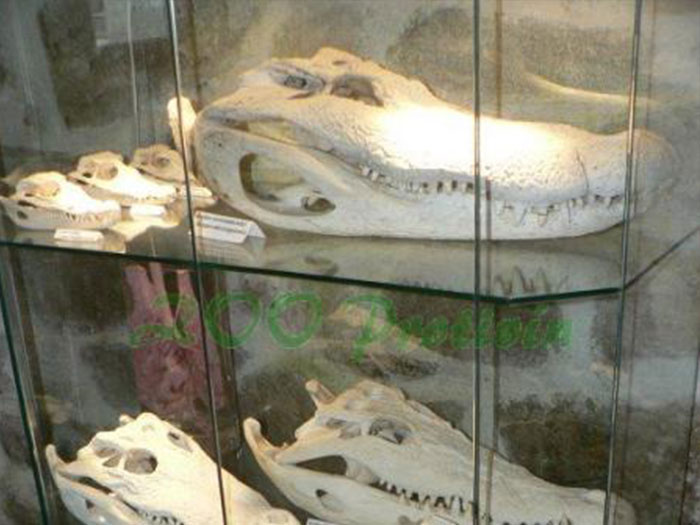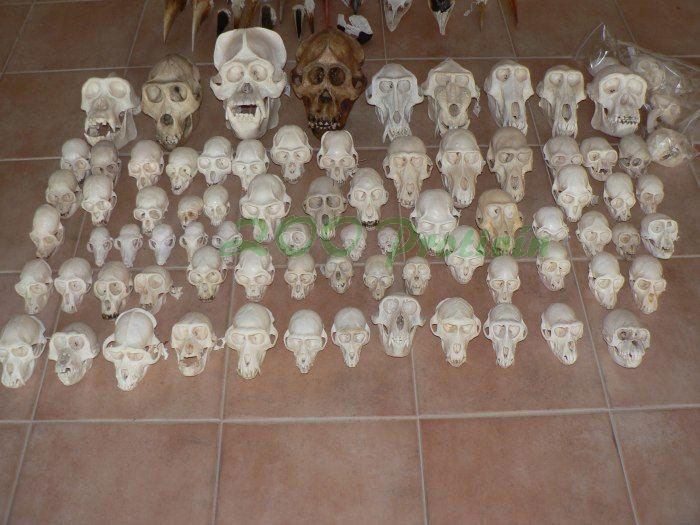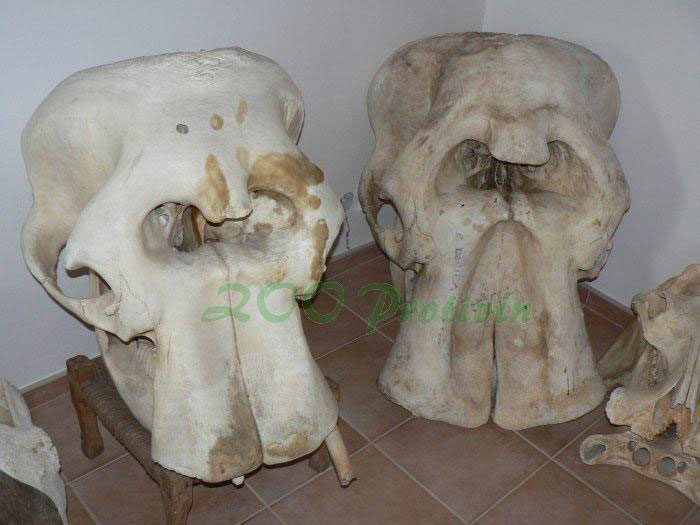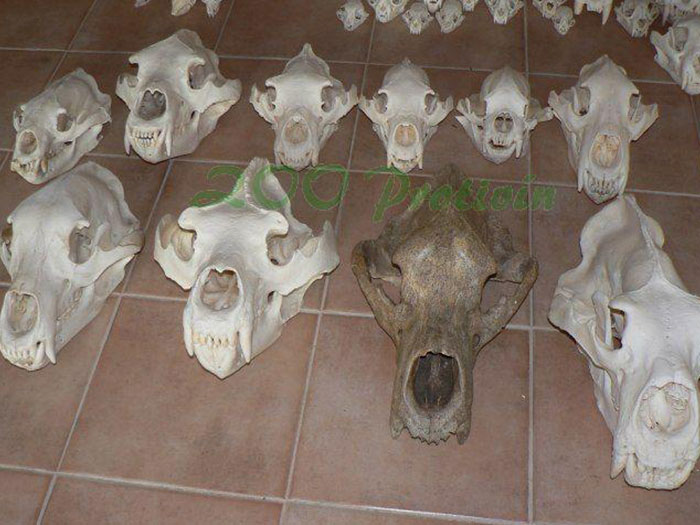A unique collection
The zoo’s activities also include educational, study, and scientific activities. These functions at the crocodile zoo are and will continue to be fulfilled primarily by the zoological museum, which was established at the same time as the zoo and is based on the zoo operator’s collection.
The private Zoological Museum in Protivín was established in March 2009 by registration in the Central Register of Collections of the Ministry of Culture of the Czech Republic. The original intention to collect osteological specimens, especially skulls and entire crocodile skeletons, has gradually expanded to include all vertebrates as well as invertebrates. As a result, the collection now contains more than 1,200 exhibits, often complete systematic groups of vertebrates, such as felines, bears, elephants, rhinos, hornbills, and an extensive collection of insects and other invertebrates.
Zoological MINIMUSEUM
The Protivín Crocodile Zoo also includes an exhibition by the Protivín Zoological Museum called the Zoological MINIMUSEUM. Visitors to the zoo can see not only live crocodiles, but also their skulls, which helps them better recognize the differences between the various species. The skulls of the world’s largest turtles are also on display, as are smaller turtles, including their shells, snake skulls, coral fish from the Philippines, the heart and lungs of a North American alligator, and entire skeletons of animals such as the spectacled caiman, the horned viper, and others.
Exhibition Africa – Wilderness in the Heart
The exhibition AFRICA – Wilderness in the Heart is the third and largest collection of photographs by the renowned National Geographic Society in the Czech Republic. Approximately 150 large-format photographs present Africa as wild, cruel, and beautiful, an Africa where people hunt, kill, but also live, celebrate, and enjoy life.
The rich photographic section of the exhibition on the theme of AFRICA was complemented, among other things, by the Protivín Zoological Museum with unique exhibits of osteological preparations of African animals such as the forest elephant, lion, South African leopard, saddle-billed stork, marabou, impala, Nile crocodile, Cape buffalo, Rothschild’s giraffe, western lowland gorilla, warthog, black rhinoceros, and white-bearded wildebeest.
The exhibition was installed in the impressive surroundings of the Minorite Monastery, opening up another remarkable medieval building, normally closed to the public, to visitors, including the chapel with the “Black Madonna” of Český Krumlov.
Exhibition Rhinos – Witnesses of the Tertiary Period
The Protivín Zoological Museum attracts visitors with its unique rhino exhibition. The uniqueness of the exhibition lies primarily in the osteological and dermoplastic preparations of various species of mammals, mainly rhinos. The exhibition features the most extensive collection of rhinoceros skeletons in the world. Most of these were originally imported by Josef Vágner from Africa to the zoos in Dvůr Králové and Ústí nad Labem in the 1970s. The wild animals were placed in an environment where they were well and regularly fed, thus achieving truly rare parameters. Visitors can see the skeletons of a male and female white rhinoceros. They are a pair from the Ústí nad Labem Zoo. The female Saša and her life partner, the male Dan, were a couple for 27 years. They are now on display as exhibits in the zoological museum. A black rhinoceros completes this rare collection of rhinoceroses.
The size of the skeletal remains of these animals is a fascinating experience for visitors. A notable specimen is the skeleton of a hybrid of the northern (Cotton’s) and southern forms of the white rhinoceros. The complete skeleton and a dermoplastic preparation of this species are on display, which is unique in the world. The exhibition is enriched by other species of mammals. The Rothschild’s giraffe, the tallest mammal in the world, is the only one standing in the Czech Republic, measuring 4.4 m. Last but not least, the exhibition also features an installation of a cheetah attacking a defending savannah pig. The cheetah skeleton is captured in an attacking position on wires in the air. < 0 >The exhibition is complemented by graphically appealing posters on which visitors can view photographs of live specimens taken in the wild. There is also a text section, often enriched with interesting facts about the life of a particular exhibit. The location of the exhibits in the historic Kaplanka building adds to the attractiveness of the exhibition.




